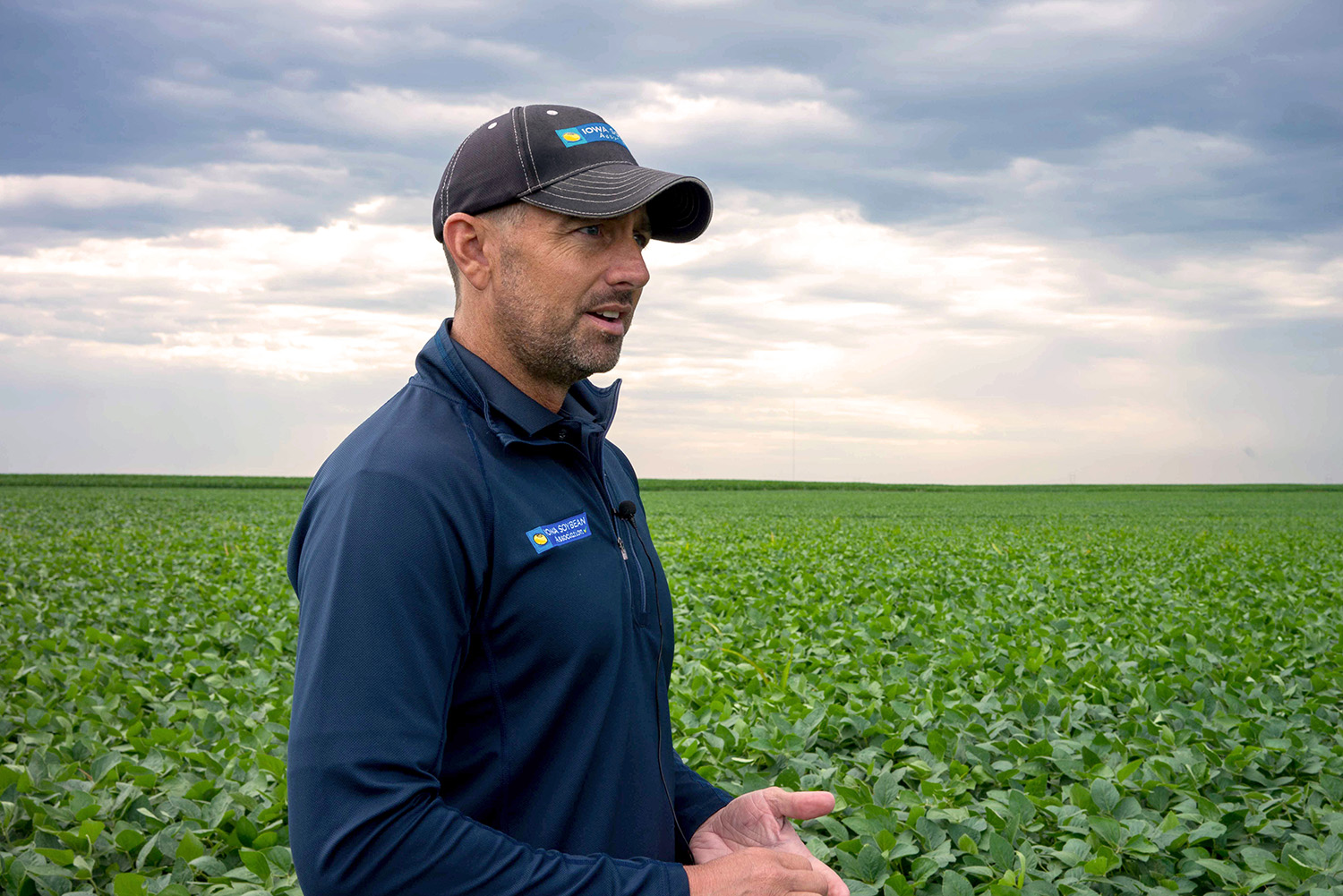
Drew Clemmensen says limiting tillage is one piece of improving soil health (Photo: Iowa Soybean Association)
Soil fertility can have a direct effect on yields
April 21, 2022 | Kriss Nelson
As fertilizer prices continue to spike, farmers are looking for ways to reduce their input costs. One solution could be improving their soil’s fertility.
“Soil fertility is the ability to support plant life; it becomes a measure of the soil’s ability to hold, store and move nutrients as well as support microorganisms,” says Drew Clemmensen, field services program manager for the Iowa Soybean Association (ISA).
The simplest way to understand soil fertility levels is learning what nutrients the crop is removing and what to replace, Clemmensen says.
“The goal is to build a system where you are replacing nutrients that you’re removing,” he says. “This way, you’re not depleting the soil every cropping cycle.”
Replacing nutrients also maximizes fertilizer efficiency, utilizing commercial fertilizer to its fullest extent, Clemmensen says.
Steve McGrew, ISA farmer-member from Emerson, says they rely on a grid sampling program to understand their soils.
“To help manage our soil fertility, we sample our fields in 2.5-acre grids,” says McGrew. “With those results, we make prescriptions for our P and K based on Iowa State University recommendations and their Nitrogen Rate Calculator, which is based on the price of corn and fertilizer prices.”
This approach, McGrew says, allows them to take a conservative approach to commercial fertilizer applications.
Journey to increased soil fertility
Healthier soils feature better structure, more air space to hold nutrients and support microbiomes to help readily convert nutrients into a plant-usable form.
“If you have healthy soils, nutrients will become more accessible to the plant throughout the growing season,” says Clemmensen.
When it comes to better soil health and structure, Clemmensen says the No. 1 goal is limiting tillage. “If a farmer can switch to limited tillage or no-till, there is a lot better chance of being successful in improving soil health.
And there is no better time than the present, as the process is a timely one. The goal to improving soil health has a side benefit of enhancing nutrient utilization in soils, but it’s necessary to take those first steps, Clemmensen says.
“Making soil modifications will be challenging for the first three to five years. It takes a while to get the system in place and working,” he says.
In addition to improving soil fertility, there are several environmental benefits of conservation efforts used to achieve better soil health.
“There is a reduction in leaching and runoff,” Clemmensen says. “Those soils will hold nutrients better and make them more available for the plant. This keeps the nutrients where they are intended, reducing the risk of leaching and running off.”
The McGrews rely heavily on infield practices to improve soil health. “We have terraces, use no-till and are heavy in cover crops. These methods are a big part of increasing our soil health – it increases our organic matter and helps reduce erosion,” McGrew says.
Soil fertility research
ISA is working on trials to help evaluate the process of achieving healthier soils, including yield differences.
Clemmensen says the team is evaluating no-till vs. conventional tillage systems, and cover crop systems vs. no cover crop systems. After five years of study, yields are leveling out between the two systems.
Although yields may change, Clemmensen says there is a reduction in the amount of nutrients needed to support a particular yield level. Therefore, a producer sees an increase in their bottom line.
ISA’s team at the Research Center for Farming Innovation, which includes agronomists like Clemmensen, is ready to help farmers transition to healthier and more fertile soils.
“Take the long-term approach and visually look at what farm and soil a are going to look like down the road,” Clemmensen says. “If you want to pass it along to the next generation, you not only want to sustain yield levels, but grow them.”
Back